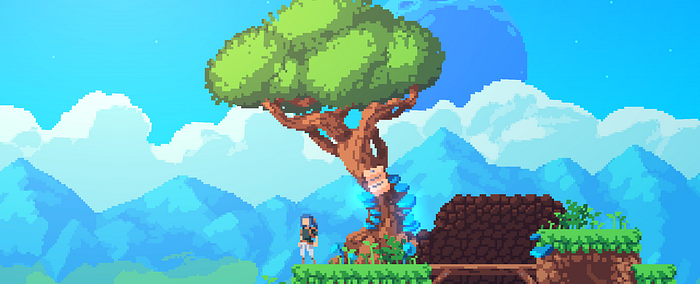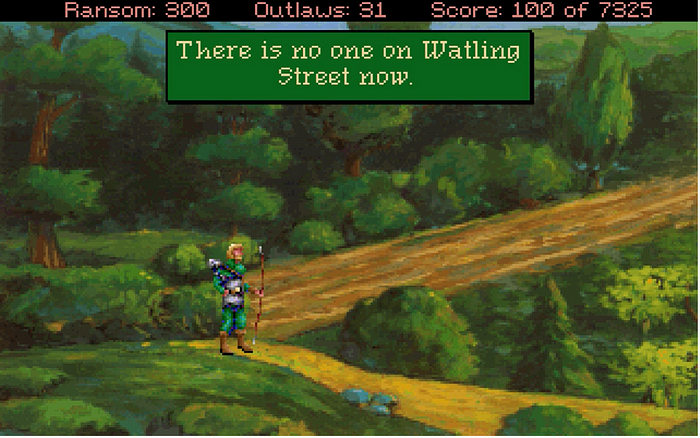

The Curse of the Indie Game Developer
source link: https://medium.com/young-coder/the-curse-of-the-indie-game-developer-9473f6cba5a2
Go to the source link to view the article. You can view the picture content, updated content and better typesetting reading experience. If the link is broken, please click the button below to view the snapshot at that time.
The Curse of the Indie Game Developer
Can a single programmer make a successful computer game — all on their own?

When it comes to great feats of coding, it’s hard to match the difficulty, creativity, and sheer audacity of building a modern computer game entirely on your own. Ambitious, yes. Lonely, definitely. Crazy — well, let’s just say that you won’t get far unless you manage to ignore the obvious impossibility of the task.
I started reflecting on single-developer games again after some controversy with a neat little project called Nykra. At first glance, Nykra seems to be a rare indie game unicorn. The game has plenty to boast about — gorgeous pixelated landscapes, atmospheric music, and an enigmatic sci-fi story. From the outside looking in, Nykra inspires that irresistible curiosity that makes the pre-orders line up.
After a multiyear development process, Nykra crossed the hardest barrier of all, going from intriguing demo to actual released product. But it didn’t take long for the rough edges to appear. Almost immediately upon release, players started reporting a litany of bugs, crashes, corrupted save files, and — worst of all — a final level that was left deliberately half-finished. The developer responded with meandering apologies that left the most important question — is this ever getting fixed? — floating in the air. (The final answer appears to be “partly, but some problems will be there forever.”)
Nykra’s struggle is far from unique. Alexander Bruce, the creator of the mind-bending Antichamber exploration game, has described the mental toll of creating his game, which was exhaustively tested and very successful — but still, like every package of pixels and code, necessarily imperfect. Ten years ago, Indie Game: The Movie documented the struggle for a handful of indie developers. Working without the backing of a major studio, indie developers often can spend years toiling in semi-isolation, with no payoff in sight and no guarantee the final product will even see the light of day. For a business-hours developer like myself, who’s paid to repeat and refine the same patterns over and over again, the task seems both staggeringly difficult and more than a little alluring. Who wouldn’t be envious of a developer with such conviction in their idea that they’re ready to devote a year or (usually) more of their life to see it through?
Back when every computer was beige, and being a power user meant your computer booted up with a clip of Also sprach Zarathustra, I thought I had witnessed the end of the single-developer game. Game development was going up a ramp of massive technical improvement, and the climb was gaining speed.
It hadn’t always been this way. In the 1980s, creative and wacky shareware projects became unexpected money makers, like the Kroz series, where the player explores a colorful landscape of ASCII characters, dodging enemy symbols and moving objects around to solve the puzzle in each level. To buy new levels, players mailed checks to Scott Miller — and mail they did, sending him as much as $1,000 a day in today’s dollars. (The game still isn’t half-bad today.)
Single-developer games weren’t limited to shareware projects. In the 1980s, major game releases could still be driven by a single developer. Richard Garriott famously claimed he taught himself programming making early games in the Ultima series, which were boxed up into professional products with cloth maps and retail store distribution.
But things felt different a few years later, when games like King’s Quest, Wing Commander, and Monkey Island started to echo the cinematic trappings of the film industry. Now there were artists creating landscapes that were rendered digitally, separate people scoring the music, and more complex engines written to underpin the entire game. If you didn’t live through this era, you can still play some of its best examples in DOS emulators (and even online using WebAssembly if you don’t want to put anything on your computer.) Here’s one of my old favorites, Conquests of the Longbow (known informally as Robin Hood):
Living through these rapid changes, it seemed to me that the days of being able to get attention with ASCII graphics or a text-based story game were over. More importantly, it seemed like going it alone — having a single developer produce a gaming product worth noticing — had become impossible.
Fortunately, I was wrong.
And I wasn’t just wrong because brilliant developers would occasionally do the impossible, like creating a billion dollar game like Minecraft (now maintained by roughly 1,000 coders). I was wrong because I didn’t anticipate the return of indie games. I didn’t foresee distribution services like Steam that could solve the malware crisis that killed shareware. Most of all, I didn’t know that the gaming community would nurture such a big place in their heart for unique concepts, pixelated graphics, and creative quirks over Hollywood polish.
Of course, indie games are no easy path to easy riches. For every Undertale or Super Meat Boy phenomenon there are dozens of jaw-droppingly good indie games that never escape their niche. A creative but head-scratching classic like Baba Is You will win the developer respect and acclaim, but it’s never going to explode into an Angry Birds-sized fad. More recently, I’ve been eyeing Hyperbolica as another creative concept game that made it to a real-life release driven by the passion of its creator. And like so many indie games, it’s a flawed gem — a unique, complex explorer that wows with non-Euclidean geometry but skimps on story. And that’s OK. Where else can you enter someone’s painstakingly created alien world for a mere $17?
So there’s the paradox. Despite the sophistication of modern gaming, the high expectations of gamers, and the incredible commitment required to release anything, the indie game world is an embarrassment of riches. There are more great indie and single-developer games in existence today that at any previous point in history.
Even if you’re not much of a gamer, I recommend checking out what the indie world has to offer. (Feel free to shout out your favorite indie games in the comments below.) But if you’re thinking of accepting the risks and jumping off this cliff on your own, plan for adversity. Imagine the longest you think it could take and quadruple your timeline. Then, seek out the indie game community for support. Because the road is not closed. But it’s a steep and treacherous path up an icy slope, and we want to see you at the top.
Subscribe to the Young Coder newsletter for a once-a-month email with our best tech stories.
Recommend
About Joyk
Aggregate valuable and interesting links.
Joyk means Joy of geeK
